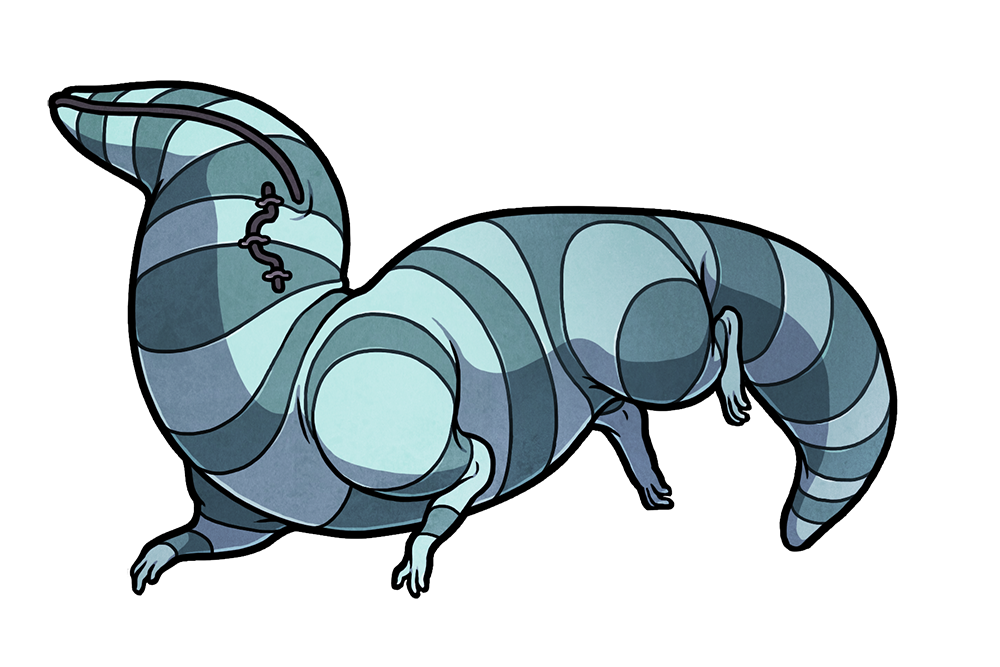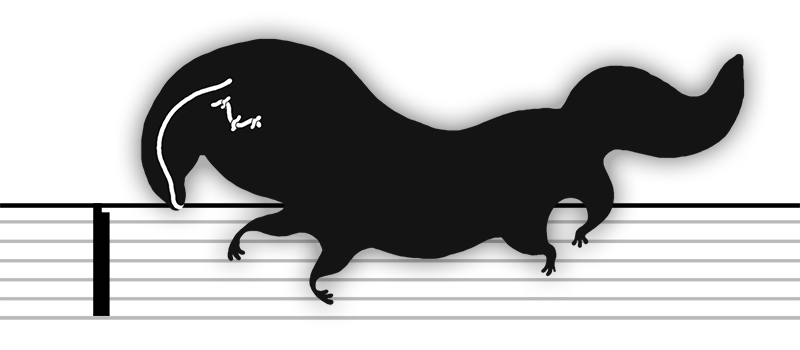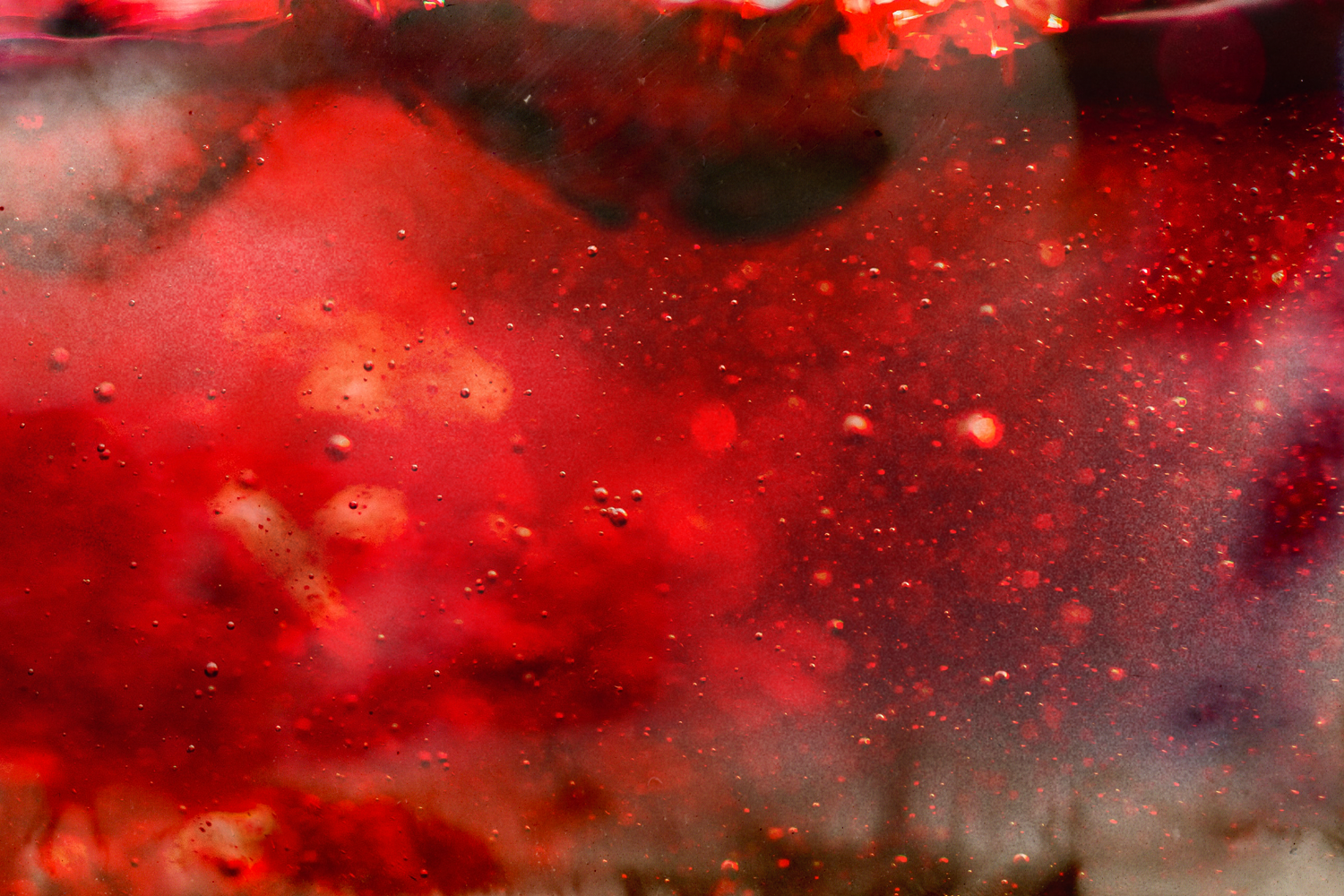

Chloridrine
the Repère de Crues
prefix chlori suffix drine
v. glaurus duke
physical appearance
The chloridrine /ˈklɔːrɪdriːn/ is a large and portly "rubbernaut" stranger with grey-green coloration and "bolted" eyes. It swims through the air, buoyant with its belly four to six feet from the ground. Rainwater-runoff fills its deluvant chamber-stomme, and its synthetic un-muscles press against their ebbs.
Though its thick, industrial rubber skin offers it ample protection against many dangers, the chloridrine's flesh is not impermeable. Once it is wounded, it will not heal. Superficial scrapes may be ignored, but any puncturing and trickle-out of the stranger's water core will eventually lead to death. Regardless of the rupture wound's size, a punctured chloridrine grows less buoyant as it drains, and is dead by the time it settles.
The chloridrine's voice sounds like a civil, if hushed crowdᶃ of five to seven adult people. The disparate tones share subdued refinement, while any language remains unidentifiable.
overlapping mumbles and vaguely disapproving sighs.

environment and generation
The chloridrine is found in rooms which contain windows into large, artificial bodies of water. The out-of-use and left-over aquariums,ỉ divided and stripped after the war, account for a great majority of their environments, but infestations would not be unheard of in water neoxidization tanks, reservoirs, and certain lavish, private swimming pools. Cold cement, unadorned and functional walls, and exposed pipes all highly raise the likelihood of a chloridrine's generation.
ỉ The aqua-zoo's walls, painted in watercolor splashes by the light refracted, stood flat concrete, and the windows between the room and the exhibits bore no adornments at their edges. Everything had been closed for a long, long time. The fish that remained swam with faded scales.
Ivory Bloom. The Frightened Gospels.
Groups of chloridrine generate at once, stepping into the world through a refraction of "dark, dingy light", which unblurs up behind them.
behaviour and effects
Detached and snobbish,४ the chloridrine stays in its group.८ Socially antisocial, it shows no more interest in its companions than it does in the exhibitsᵻ all around it.
८ Its greatest pleasure might be looking at a piece of trash. Its biggest conceited thrill might be staring at a dead fish. Oh, but it can't see, can it...so I guess it's just a pretender, after all.
ᵻ Drift, drift, drift goes the rubber-skinned bluffent. Smug it paddles, half-captivated, but not impressed.
४ Bored, bored, bored, by this sad war's wake that had broken all the best exhibitions and left it to ooh and ahh at bricks and rubble piles, pretending they were Michelangelo's.
Ivory Bloom. Garrote & The Seven Walls of Mercy.
interactions with sensitives
The chloridrine regards sensitives with pompous irritation, sometimes turning its head away to avoid gazing at this perceived nuisance. Should contact persist, the stranger drifts off with a dissatisfied grumble to its muddled rush of voices. Even if cornered, however, it does not grow aggressive. When touched, it shakes its body as a horse might shake off a fly, but defends itself with only a vain waving of the hand, ineffective in the face of savagery.
The chloridrine's presence causes the sensation of submersionϨ within water, without actual drowning.
Ϩ Filling the lungs, colder and colder. I can't breathe – I can't breathe.
voyeuristic bloodlust
All of the chloridrine's restrained pretenses are shed in an instant, however, when it is able to witness a fight between two (and only two) sensitives. Its grows voyeuristically bloodthirsty,Ꮀ the crowd of its voices alternatively enraged and elated, though the stranger does not engage in any acts of violence, itself.
Ꮀ Salivating, saying, come on. Give it to me. And rip it all apart.
In this regard, the chloridrine inflicts its effect in order to prolong and worsen the destruction. Once the fight has begun, should one sensitive try to break off, the drowning sensation becomes imminently unbearable, and ceases only once aggression resumes.
Whether by fist or by pipefall, once the fight ends, the crowd of chloridrine disperse, bored and disdainful once again, if vaguely impressed by the victor.
drowning and death
Thanks to its durable body, the chloridrine ages gracefully, and with no loss of effect.꒥ And yet, it too must fall victim to itsⱤ ▗▚▙▙ .
꒥ Wouldn't it be nice. Oh, wouldn't it be nice.
Ɽ Were you going to say, hubris?
During the last ninth to nineteenth of the stranger's lifespan, it drifts with less vigour. The drowner struggles and gags, but despite all efforts, cannot maintain its head above the water. With the bolts of strange's eyes straining, it sinks downward.⺃
⺃ Because it's all true, what they say.

It's like (it's) forgetting to swim.
The crowd around it turns up their noses at their dying companion. And so the aquarium walls don't make much of an audience, but it's the only reception that the drowning stranger receives as the rest of the group drift off.
The corpse goes limp beneath the unseeable waves, and lays flat and dead once it settles on the ground. With no organic components, the bleak marker can remain, untouched, for hundreds of years, drawing sighs and tuts from the diminishing crowd of remaining chloridrine in their churning paths through the museums.



